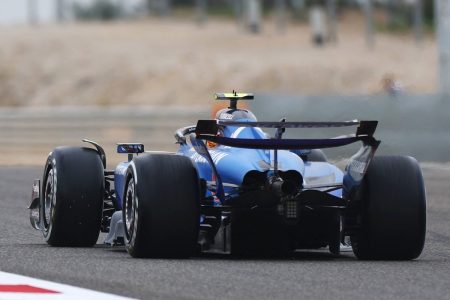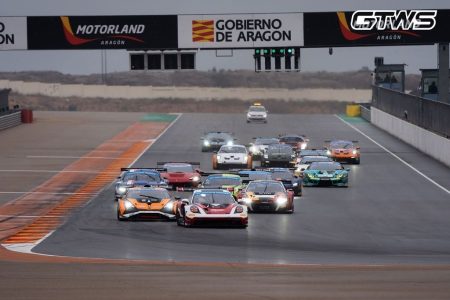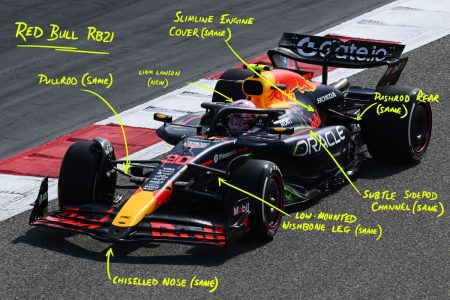A Journey from the Shores of F2 to the Heart of F1
In 2018, I found myself working as Formula 2’s press officer, a role that kept me in the periphery of the Formula 1 (F1) paddock. Our interactions with the F1 elite were usually fleeting and often unnoticed, but we still caught snippets of driver market gossip that intersected with our world. One such tidbit was that Lando Norris was being considered for a mid-season switch to Toro Rosso, replacing Brendon Hartley. Another was that Artem Markelov was supposedly in line for a 2019 Williams drive until his father’s arrest derailed those plans. These amusing footnotes never quite materialized, but they added a layer of intrigue to our otherwise isolated support paddock.
The Influence of F1 on the Support Categories
F1’s growing influence occasionally seeped into our "other pitlane" as well. We knew well in advance that F2 would be featured in the next year’s F1 game, thanks to our role in ferrying drivers to a nondescript room at the Hungaroring for facial scanning by Codemasters. Around the same time, whispers of a Netflix documentary began to circulate, with camera crews following teams and drivers in the main paddock. For someone like me, who struggled to keep tabs on the full F1 season, these developments were welcome. The support categories’ schedules often meant we were already on our way to the airport or back home when the F1 races were in full swing. My记忆中的一个例子是,当银石大奖赛开始时,我早就已经回到家中,忙着撰写一篇关于Santino Ferrucci被禁赛两场的新闻稿。
The Rise of "Drive to Survive"
The debut of "Drive to Survive" was a game-changer for viewers like me who had missed most of the 2018 season. The series, broken into handy 40-minute episodes, provided a dramatized yet engaging recap of the key stories from that year. It was a perfect introduction for those looking to dive into F1 in 2019, a year in which I had moved to Autosport and, admittedly, occasionally annoyed our readers with my half-baked opinions and frequent mentions of "managing airflow" in our YouTube content. Despite its dramatizations, the series filled a crucial gap by bringing F1’s inner workings to a mainstream audience in a format that was both tried-and-tested and not yet completely ubiquitous.
The Art of Dramatization
The first season of "Drive to Survive" was particularly notable for its dramatized conflicts, especially between Red Bull’s Christian Horner and then-Renault boss Cyril Abiteboul. Horner seemed eager to stoke the rivalry by dubbing Abiteboul "Squirrel Irritable" based on a vague rhyme. This dynamic reminded me of the early seasons of "Death in Paradise," where a grumpy, emotionally uptight British detective clashed with a free-spirited, emotionally available French officer on a Caribbean island. However, unlike "Death in Paradise," where the characters’ conflicts often resolved warmly, the rivalry between Horner and Abiteboul lacked a satisfying conclusion. Instead, it ended with Abiteboul poaching Horner’s driver and Red Bull switching engine suppliers, leaving an unresolved tension.
The Target Audience Dilemma
As someone who has been fortunate enough to work within the F1 world, the series’ dramatizations and contrivances are glaringly obvious. For instance, it’s hard to believe that Toto Wolff would discuss a Mercedes drive for George Russell in front of cameras, or that Christian Horner would hold crucial driver talks while still being mic’d up. These inconsistencies are most apparent to those who closely follow F1 and can recognize the out-of-order radio calls and fabricated paddock chats. However, for the majority of new viewers, these elements blend seamlessly into the narrative, providing an engaging and accessible introduction to the sport.
A Different Perspective
The key demographic for "Drive to Survive" is not the seasoned F1 fans but the newcomers who are looking for a captivating and easy-to-follow entry point into the championship. While the series may lack the depth and accuracy that die-hard fans crave, it excels at "onboarding fans" and has played a significant role in F1’s global expansion, particularly in the United States. I don’t expect the producers to cater to every nuance of F1’s technical and strategic intricacies. Just as a chef doesn’t spend evenings watching amateur cooking channels, F1 enthusiasts don’t need every detail of their passion to be broken down into bite-sized, dramatized segments. The series serves its purpose brilliantly for its intended audience, and that’s perfectly fine.
Embracing the Fringe
Not everything is made for everyone, and "Drive to Survive" is no exception. It’s a product designed to attract and retain a broader audience, and it does so with great success. For those deeply immersed in the sport, the series might feel a bit contrived, but it’s essential to recognize that it’s not meant for us. Just as committed carnivores can’t expect a vegan restaurant to serve a 12oz porterhouse steak, die-hard F1 fans shouldn’t demand that "Drive to Survive" cater to their every technical curiosity. The series has its place and serves its audience well, even if it doesn’t mesh with the more detailed and nuanced perspectives of those already in the know.











